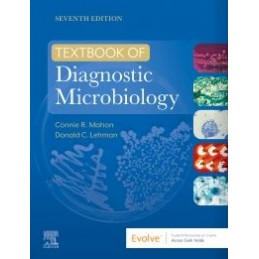- Reduced price

Order to parcel locker

easy pay


 Delivery policy
Delivery policy
Choose Paczkomat Inpost, Orlen Paczka, DHL, DPD or Poczta Polska. Click for more details
 Security policy
Security policy
Pay with a quick bank transfer, payment card or cash on delivery. Click for more details
 Return policy
Return policy
If you are a consumer, you can return the goods within 14 days. Click for more details
**Selected for Doody’s Core Titles® 2024 in Laboratory Technology**
Gain the knowledge and skills you need to succeed in the clinical lab! Textbook of Diagnostic Microbiology, 7th Edition uses a reader-friendly building-block approach to help you learn the essentials of diagnostic microbiology. Featuring full-color drawings and photos, this text helps you learn to develop the critical thinking and problem-solving skills necessary to the accurate diagnosis of infectious diseases and the identification of infectious agents. Written by noted educators Connie R. Mahon and Donald C. Lehman, this edition adds new content on SARS-CoV-2 and COVID-19, along with the latest information on prevention, treatment modalities, and CDC guidelines.
Data sheet
Reference: 20606
Author: Dariusz Witowski
zbiór zadań maturalnych wraz z odpowiedziami (2005-2026)
